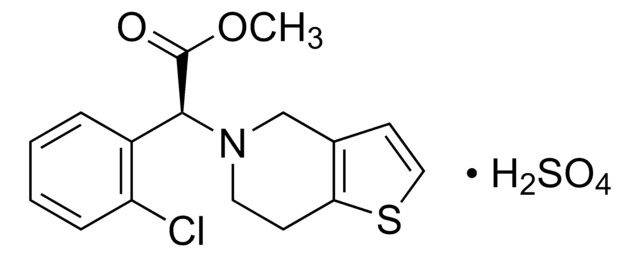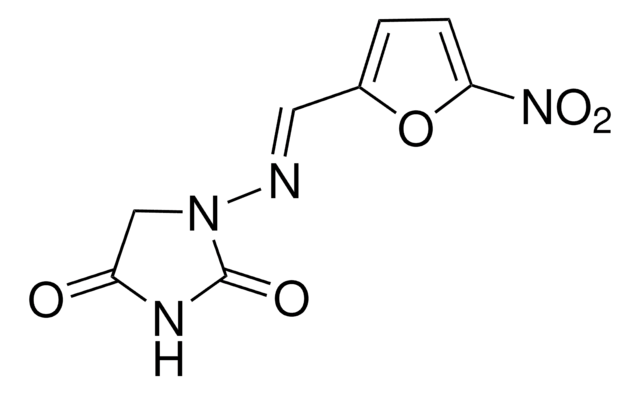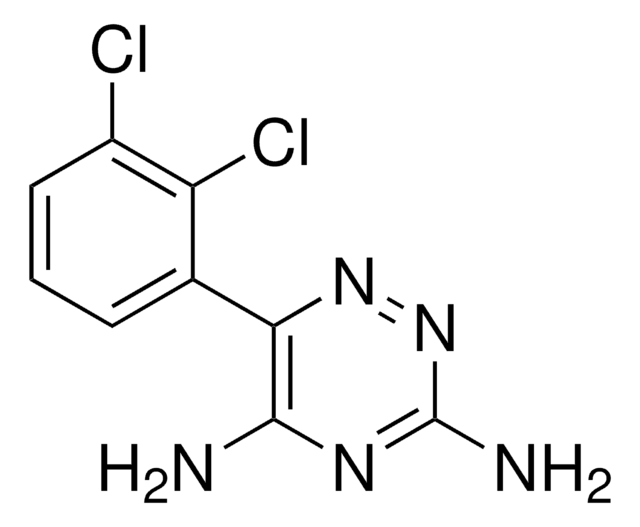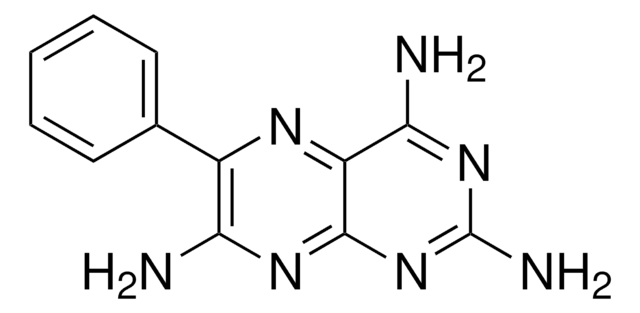PHR1722
Triamterene
Pharmaceutical Secondary Standard; Certified Reference Material
Synonym(s):
Triamterene, 2,4,7-Triamino-6-phenylpteridine, 6-Phenyl-2,4,7-pteridinetriamine
About This Item
Recommended Products
grade
certified reference material
pharmaceutical secondary standard
Quality Level
Agency
traceable to Ph. Eur. Y0000837
traceable to USP 1680007
API family
triamterene
CofA
current certificate can be downloaded
packaging
pkg of 400 mg
technique(s)
HPLC: suitable
gas chromatography (GC): suitable
application(s)
pharmaceutical (small molecule)
format
neat
storage temp.
2-30°C
SMILES string
Nc1nc(N)c2nc(-c3ccccc3)c(N)nc2n1
InChI
1S/C12H11N7/c13-9-7(6-4-2-1-3-5-6)16-8-10(14)18-12(15)19-11(8)17-9/h1-5H,(H6,13,14,15,17,18,19)
InChI key
FNYLWPVRPXGIIP-UHFFFAOYSA-N
Gene Information
human ... SCNN1A(6337) , SCNN1B(6338) , SCNN1G(6340)
Looking for similar products? Visit Product Comparison Guide
General description
Application
Analysis Note
Other Notes
Footnote
related product
Signal Word
Warning
Hazard Statements
Precautionary Statements
Hazard Classifications
Acute Tox. 4 Oral - Eye Irrit. 2 - Skin Irrit. 2 - STOT SE 3
Target Organs
Respiratory system
Storage Class Code
11 - Combustible Solids
WGK
WGK 3
Flash Point(F)
Not applicable
Flash Point(C)
Not applicable
Regulatory Listings
Regulatory Listings are mainly provided for chemical products. Only limited information can be provided here for non-chemical products. No entry means none of the components are listed. It is the user’s obligation to ensure the safe and legal use of the product.
JAN Code
PHR1722-400MG-PW:
PHR1722-400MG:
Choose from one of the most recent versions:
Certificates of Analysis (COA)
Don't see the Right Version?
If you require a particular version, you can look up a specific certificate by the Lot or Batch number.
Already Own This Product?
Find documentation for the products that you have recently purchased in the Document Library.
Our team of scientists has experience in all areas of research including Life Science, Material Science, Chemical Synthesis, Chromatography, Analytical and many others.
Contact Technical Service









